| Studies from all over the world prove that the cabbage family can protect you from many types of cancer.
Korean researchers found that eating lots of cabbage decreases your risk of stomach cancer. Other studies showed that brussels sprouts can protect you from colon cancer. And in a Chinese hospital study, doctors found that if you eat Chinese cabbage regularly, you're less likely to get brain cancer.
Harvard nutritionists studied 47,000 men over a 10-year period and found that the more cabbage the men ate, the less likely they were to get bladder cancer. | | But that's not all the cancer-fighting cabbage family can do. Scientists at the Jiangsu Institute of Cancer Research in Japan made a startling discovery when they studied more than 500 male smokers with and without cancer. They found that smokers who ate cabbage at least three times a week had only half the risk of developing lung cancer as other smokers.
Chases away constipation. Cabbage is an excellent source of fiber, and it helps bulk up your bowel movements for easy elimination. |
Textbook of Natural Medicine 2nd Edition Volume 2Michael T. Murray, ND
See book keywords and concepts | | Diet
Eliminate allergic food, promote foods high in dietary fiber, and utilize various members of the cabbage family.
Supplements
Vitamin A: 20,000 IU three times/day
Vitamin C: 500 mg three times/day
Vitamin E: 100 IU three times/day
Flavonoids: 500 mg three times/day
Zinc: 20 mg/day
Glutamine: 500 mg three times/day
Bismuth subcitrate: 240 mg twice daily before meals.
Botanical medicine
Deglycyrrhizinated licorice root (DGL): 380-760 mg 20 minutes before meals three times / day.
REFERENCES
1. Berstad K, Berstad A. |
Laurie Deutsch Mozian, M.S., R.D.
See book keywords and concepts | 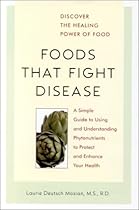 Rutabagas
Rutabagas are root vegetables that belong to the mustard family and are closely related to the cabbage family. They come in yellow and white varieties, but the yellow is more widely eaten. Rutabagas contain the phytochemicals indoles and isothiocynates and are fairly good sources of beta-carotene and ascorbic acid. Rutabagas, also called Swedish turnips, are cold-weather crops and have sustained families through wars and famines. They were staples that helped European families survive the harsh winters of World War II when food was scarce.
Rye. See Whole Grains. Rutabagas
Rutabagas are root vegetables that belong to the mustard family and are closely related to the cabbage family. They come in yellow and white varieties, but the yellow is more widely eaten. Rutabagas contain the phytochemicals indoles and isothiocynates and are fairly good sources of beta-carotene and ascorbic acid. Rutabagas, also called Swedish turnips, are cold-weather crops and have sustained families through wars and famines. They were staples that helped European families survive the harsh winters of World War II when food was scarce.
Rye. See Whole Grains. |
Gabriel Cousens, M.D.
See book keywords and concepts | 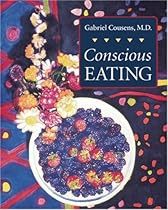 Phytates, found in grains and beans, and sulphur-containing amino acids, found particularly in the cabbage family, are also good chelators. Not only do these have a chelating effect, but the sulphur-containing amino acid vegetables prevent the uptake of sulphur-135.
Special Foods That Protect Against Radiation Exposure
Miso is a food that has been acclaimed as a general protector against radiation sickness and chronic disease. Miso is an alkaline-forming, fermented paste made from soybeans which may also be mixed with rice or barley. Phytates, found in grains and beans, and sulphur-containing amino acids, found particularly in the cabbage family, are also good chelators. Not only do these have a chelating effect, but the sulphur-containing amino acid vegetables prevent the uptake of sulphur-135.
Special Foods That Protect Against Radiation Exposure
Miso is a food that has been acclaimed as a general protector against radiation sickness and chronic disease. Miso is an alkaline-forming, fermented paste made from soybeans which may also be mixed with rice or barley. |
Kathi Keville
See book keywords and concepts | 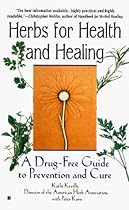 You can get sulfur in your diet by incorporating garlic, onions and members of the cabbage family and also by dining on nasturtiums, which you can add to your salad. The French recommend nasturtiums for all sorts of problems that result from having dry hair, and even claim that it prevents premature balding. They also add this flower to hair rinses. As an old country cure for brittle hair, they rub raw onion juice on their hair roots before shampooing!
Dandruff can be a problem with either a dry or an oily scalp, but these dry flakes are most common if you have a dry scalp and dry hair. You can get sulfur in your diet by incorporating garlic, onions and members of the cabbage family and also by dining on nasturtiums, which you can add to your salad. The French recommend nasturtiums for all sorts of problems that result from having dry hair, and even claim that it prevents premature balding. They also add this flower to hair rinses. As an old country cure for brittle hair, they rub raw onion juice on their hair roots before shampooing!
Dandruff can be a problem with either a dry or an oily scalp, but these dry flakes are most common if you have a dry scalp and dry hair. |
Prevention Magazine
See book keywords and concepts |  New Taste in the Marketplace
Brussels sprouts are miniature members of the cabbage family. And while the brussels sprouts of yore were often strong and bitter, the taste has literally changed, says Steve Bontadelli, a brussels sprouts grower in Santa Cruz, California.
The taste problem originally began when brussels sprouts growers started using machines instead of harvesting sprouts by hand. To make machine harvesting easier, they developed a new strain of sprouts. Unfortunately, these "new and improved" plants yielded some really bitter sprouts, recalls Bontadelli. New Taste in the Marketplace
Brussels sprouts are miniature members of the cabbage family. And while the brussels sprouts of yore were often strong and bitter, the taste has literally changed, says Steve Bontadelli, a brussels sprouts grower in Santa Cruz, California.
The taste problem originally began when brussels sprouts growers started using machines instead of harvesting sprouts by hand. To make machine harvesting easier, they developed a new strain of sprouts. Unfortunately, these "new and improved" plants yielded some really bitter sprouts, recalls Bontadelli. | | Pahhapp Familv 103
Members of the cabbage family are packed with these nutritious compounds. Particularly good are cabbages like bok choy and savoy, which are super sources of beta-carotene, a nutrient that other cabbages don't have in abundance. High blood levels of beta-carotene are related to lower incidences of heart attacks, certain types of cancers, and cataracts.
Not only are these cabbages high in beta-carotene; they're also a good source of vitamin C, which has been shown to boost immunity as well as reduce blood pressure and fight heart disease. |
Sheldon Saul Hendler
See book keywords and concepts | 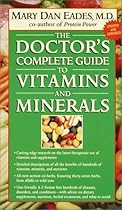 Broccoli, another member of the cabbage family, was found, in an additional two trials, to be even more protective against radiation damage. In still two more trials, both pre- and post-irradiation feeding of cabbage were found to have statistically significant protective effects. The best results, however, were obtained when cabbage was given both before and after irradiation.
Only now are we beginning to identify some of the substances in cruciferous vegetables that contribute to these protective effects. Broccoli, another member of the cabbage family, was found, in an additional two trials, to be even more protective against radiation damage. In still two more trials, both pre- and post-irradiation feeding of cabbage were found to have statistically significant protective effects. The best results, however, were obtained when cabbage was given both before and after irradiation.
Only now are we beginning to identify some of the substances in cruciferous vegetables that contribute to these protective effects. |
Simon Mills and Kerry Bone
See book keywords and concepts |  The cabbage family contain glucosinalates that yield toxic nitriles and goitrogenic thiocyanates.
The oil from rapeseed, widely grown in temperate climates as a cheap vegetable oil, contains erucic acid, which is known to cause heart damage in experimental animals.30
Potatoes are members of the deadly nightshade family; when the tuber turns green under the influence of light it produces the same poisonous alkaloids. The cabbage family contain glucosinalates that yield toxic nitriles and goitrogenic thiocyanates.
The oil from rapeseed, widely grown in temperate climates as a cheap vegetable oil, contains erucic acid, which is known to cause heart damage in experimental animals.30
Potatoes are members of the deadly nightshade family; when the tuber turns green under the influence of light it produces the same poisonous alkaloids. |
Susun S. Weed
See book keywords and concepts |  Canola oil, made from the seeds of a cabbage family plant, is usually fresh and rarely expensive, even when organically grown.
FLAX SEED OIL {Linum usitatissimum) is a rich source of essential fatty acids and antioxidants. It adversely affects both the initiation and growth stages of breast cancer20 and has been shown to be anti-tumor, antimiotic, and antiviral (so long as it is not heated). I buy only absolutely fresh flax seed oil (in a dated bottle) and keep it frozen or refrigerated. Rancid flax seed oil can cause vomiting and purging. The price of this oil restricts its use. Canola oil, made from the seeds of a cabbage family plant, is usually fresh and rarely expensive, even when organically grown.
FLAX SEED OIL {Linum usitatissimum) is a rich source of essential fatty acids and antioxidants. It adversely affects both the initiation and growth stages of breast cancer20 and has been shown to be anti-tumor, antimiotic, and antiviral (so long as it is not heated). I buy only absolutely fresh flax seed oil (in a dated bottle) and keep it frozen or refrigerated. Rancid flax seed oil can cause vomiting and purging. The price of this oil restricts its use. |
Jean Carper
See book keywords and concepts | 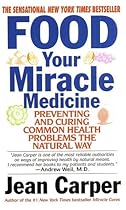 Additionally, some food, notably vegetables of the cabbage family, increases the rate at which your body bums up and disposes of estrogen circulating in the body. Legumes, especially soybeans, have particularly strong estrogenic activity, and are now the commercial source for compounds used to make birth control pills.
Foods with Estrogenic Activity
Anise, apple, broccoli, Bmssels sprouts, cabbage, carrot, cauliflower, coffee, com, cumin, flax seed, garlic, licorice, oats, pineapple, peanut, potato, rice, sesame seed, soybeans. Additionally, some food, notably vegetables of the cabbage family, increases the rate at which your body bums up and disposes of estrogen circulating in the body. Legumes, especially soybeans, have particularly strong estrogenic activity, and are now the commercial source for compounds used to make birth control pills.
Foods with Estrogenic Activity
Anise, apple, broccoli, Bmssels sprouts, cabbage, carrot, cauliflower, coffee, com, cumin, flax seed, garlic, licorice, oats, pineapple, peanut, potato, rice, sesame seed, soybeans. |
John Heinerman
See book keywords and concepts |  If grown rapidly, it is the best-flavored member of the cabbage family, with the possible exception of cauliflower. The plant seems to be of comparatively recent origin. Kohlrabi is a biennial plant which is grown as an annual in some kitchen gardens. The second year a seedstalk goes up as with other members of the cabbage clan.
Kohlrabi comes in white, green, and purple colors. The Vienna variety in any of the three colors, is generally grown. There is also an early Erfurt variety of similar quality. The white Vienna is undoubtedly the most popular. If grown rapidly, it is the best-flavored member of the cabbage family, with the possible exception of cauliflower. The plant seems to be of comparatively recent origin. Kohlrabi is a biennial plant which is grown as an annual in some kitchen gardens. The second year a seedstalk goes up as with other members of the cabbage clan.
Kohlrabi comes in white, green, and purple colors. The Vienna variety in any of the three colors, is generally grown. There is also an early Erfurt variety of similar quality. The white Vienna is undoubtedly the most popular. |
Leo Galland
See book keywords and concepts |  They include members of the cabbage family (Cruciferae), which includes not only cabbage but broccoli, cauliflower, bok choy, and Brussels sprouts, and also green onions and kale. These vegetables contain compounds called aryl isothiocyanates, which directly stimulate the activity of an enzyme, glutathione S-transferase, an important component of the Phase Two system. Activation of Phase Two detoxification probably explains the highly publicized effects of broccoli, Brussels sprouts, and cabbage in preventing cancer in humans and experimental animals. They include members of the cabbage family (Cruciferae), which includes not only cabbage but broccoli, cauliflower, bok choy, and Brussels sprouts, and also green onions and kale. These vegetables contain compounds called aryl isothiocyanates, which directly stimulate the activity of an enzyme, glutathione S-transferase, an important component of the Phase Two system. Activation of Phase Two detoxification probably explains the highly publicized effects of broccoli, Brussels sprouts, and cabbage in preventing cancer in humans and experimental animals. |
Stephanie Beling
See book keywords and concepts | 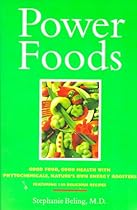 This member of the cabbage family, with its deep green, paddlelike leaves, is available year-round and is delicious any number of ways, except raw. It is considered good for the liver and a superior blood cleanser.
Kale
Kale thrives in the cold; in fact, its flavor is enhanced by frost! For that reason, it is the perfect winter vegetable, especially welcome when other fresh vegetables are hard to come by. No wonder it's so well known in Scotland, from whence Benjamin Franklin brought the first seeds to the United States two centuries ago. This member of the cabbage family, with its deep green, paddlelike leaves, is available year-round and is delicious any number of ways, except raw. It is considered good for the liver and a superior blood cleanser.
Kale
Kale thrives in the cold; in fact, its flavor is enhanced by frost! For that reason, it is the perfect winter vegetable, especially welcome when other fresh vegetables are hard to come by. No wonder it's so well known in Scotland, from whence Benjamin Franklin brought the first seeds to the United States two centuries ago. |
Barnet Meltzer, M.D.
See book keywords and concepts | 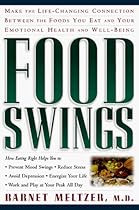 In the past few years, research has indicated that animals fed broccoli and other members of the cabbage family (known collectively as cruciferous vegetables) had lower rates of cancer than those in the control group. Applying the same theory to humans, German scientists discovered that, compared to Americans on the SAD diet, the Japanese suffer significantly lower rates of cancer. The experiments determined that the Japanese had a large percentage of genisteina phytonutrient derived from soyin their urine. In the past few years, research has indicated that animals fed broccoli and other members of the cabbage family (known collectively as cruciferous vegetables) had lower rates of cancer than those in the control group. Applying the same theory to humans, German scientists discovered that, compared to Americans on the SAD diet, the Japanese suffer significantly lower rates of cancer. The experiments determined that the Japanese had a large percentage of genisteina phytonutrient derived from soyin their urine. |
J. Robert Hatherill
See book keywords and concepts |  Cruciferous vegetables refer to foods of the cabbage family and commonly include broccoli, brussels sprouts, cabbage, cauliflower, garden cress, radish, turnips, and watercress.
The cruciferous vegetables contain many cancer-slashing compounds, including the major class of compounds called glucosino-
HEALTH BENEFITS OF QUERCETIN anticancer antioxidant anti-inflammatory antibacterial antiviral antifungal lessens allergies and asthma may protect from heart disease lates. Glucosinolates are a class of more than 100 sulfur-containing compounds, the vast majority of which show anticancer activity. Cruciferous vegetables refer to foods of the cabbage family and commonly include broccoli, brussels sprouts, cabbage, cauliflower, garden cress, radish, turnips, and watercress.
The cruciferous vegetables contain many cancer-slashing compounds, including the major class of compounds called glucosino-
HEALTH BENEFITS OF QUERCETIN anticancer antioxidant anti-inflammatory antibacterial antiviral antifungal lessens allergies and asthma may protect from heart disease lates. Glucosinolates are a class of more than 100 sulfur-containing compounds, the vast majority of which show anticancer activity. |
Paul Pitchford
See book keywords and concepts |  An ancient member of the cabbage family, it also has abundant sulfur and its juice can be used to treat stomach and duodenal ulcers. Kale is a hardy cold-weather green whose flavor becomes sweeter with a touch of frost. It is an exceptional source of chlorophyll, calcium, iron, and vitamin A during its growing season in the fall, winter, and early spring.
Kohlrabi
Neutral thermal nature; pungent, sweet, and bitter flavor; improves qi energy circulation and eliminates blood coagulations and stagnancies; reduces damp conditions of the body. An ancient member of the cabbage family, it also has abundant sulfur and its juice can be used to treat stomach and duodenal ulcers. Kale is a hardy cold-weather green whose flavor becomes sweeter with a touch of frost. It is an exceptional source of chlorophyll, calcium, iron, and vitamin A during its growing season in the fall, winter, and early spring.
Kohlrabi
Neutral thermal nature; pungent, sweet, and bitter flavor; improves qi energy circulation and eliminates blood coagulations and stagnancies; reduces damp conditions of the body. | | Vegetables such as carrots, parsnips, turnips, rutabagas, watercress, parsley, the cabbage family (cauliflower, broccoli, bok choy, etc.), winter squash, kale, and certain other dark leafy greens have milder properties. They grow in temperate-to-cold climates and contain minerals and other elements that make it possible for some of them to survive harsh weather and even live under snow all winter. When eating these regularly, we take on their qualities and build resistance to cooler weather and disease. In storage, several of them keep their vitality a long time. |
Gabriel Cousens, M.D.
See book keywords and concepts |  These leafy greens include alfalfa sprouts, green beans, broccoli, bokchoy, Brussels sprouts, vegetables in the cabbage family, collards, cucumbers, kale, leeks, mustard greens, peppers, romaine lettuce, spinach, Swiss chard, and turnip greens. Yellow vegetables are high in the fat-soluble vitamins A and E. These yellow vegetables include carrots, corn, pumpkin, rutabagas, sweet potatoes, and acorn, butternut, Hubbard, spaghetti, and summer squashes.
Fruits are an important food group for pregnancy, providing a good source of vitamins, minerals, enzymes, and biological water. These leafy greens include alfalfa sprouts, green beans, broccoli, bokchoy, Brussels sprouts, vegetables in the cabbage family, collards, cucumbers, kale, leeks, mustard greens, peppers, romaine lettuce, spinach, Swiss chard, and turnip greens. Yellow vegetables are high in the fat-soluble vitamins A and E. These yellow vegetables include carrots, corn, pumpkin, rutabagas, sweet potatoes, and acorn, butternut, Hubbard, spaghetti, and summer squashes.
Fruits are an important food group for pregnancy, providing a good source of vitamins, minerals, enzymes, and biological water. |
Artemis P. Simopoulos, M.D., and Jo Robinson
See book keywords and concepts |  Kale, a member of the cabbage family, is one of the most nutritious of all vegetables. There are two basic varieties, "Russian" kale, which has a purple-green color and smooth, relatively tender leaves, and "regular" kale, which is gray-green and has tightly curled leaves. Both are excellent sources of antioxidants, phytochemicals, vitamins, calcium, magnesium, and iron. For a quick and easy vegetable dish, chop kale into bite-sized pieces and steam until tender. (Discard thick stems or cut them up and saute them for a few minutes before adding the more tender leaves. Kale, a member of the cabbage family, is one of the most nutritious of all vegetables. There are two basic varieties, "Russian" kale, which has a purple-green color and smooth, relatively tender leaves, and "regular" kale, which is gray-green and has tightly curled leaves. Both are excellent sources of antioxidants, phytochemicals, vitamins, calcium, magnesium, and iron. For a quick and easy vegetable dish, chop kale into bite-sized pieces and steam until tender. (Discard thick stems or cut them up and saute them for a few minutes before adding the more tender leaves. |
Gabriel Cousens, M.D.
See book keywords and concepts |  The sulphur, which is high in all members of the cabbage family, prevents the uptake of sulphur-135.
Cysteine may be the most active factor in garlic, however. Cysteine is an antioxidant which helps to quench free radical production. Cysteine also binds with, and deactivates, cobalt-6o. It also protects against X-rays. Dr. Schechter points out that the Japanese first reported the protective effects of cysteine in 1972 when they found that mice fed cysteine were able to survive 600 rads of radiation, when 70% of the mice who did not receive cysteine did not survive the radiation. The sulphur, which is high in all members of the cabbage family, prevents the uptake of sulphur-135.
Cysteine may be the most active factor in garlic, however. Cysteine is an antioxidant which helps to quench free radical production. Cysteine also binds with, and deactivates, cobalt-6o. It also protects against X-rays. Dr. Schechter points out that the Japanese first reported the protective effects of cysteine in 1972 when they found that mice fed cysteine were able to survive 600 rads of radiation, when 70% of the mice who did not receive cysteine did not survive the radiation. |
John Heinerman
See book keywords and concepts |  KOHLRABI JUICE
"Nothing to Sneeze at for Sinus Troubles"
DESCRIPTION
The plant kohlrabi (Brassica cavolorapd) is the most interesting of the cabbage family because of the structure of the stem. The leaves are similar to the turnip's, however, the stem is enlarged just above the ground to the size and shape of a turnip. The stem is really subtended by the round turnip-like structure. Kohlrabi is not grown to its full size, because when it is used before the fleshy stem gets too old, it has an excellent flavor. KOHLRABI JUICE
"Nothing to Sneeze at for Sinus Troubles"
DESCRIPTION
The plant kohlrabi (Brassica cavolorapd) is the most interesting of the cabbage family because of the structure of the stem. The leaves are similar to the turnip's, however, the stem is enlarged just above the ground to the size and shape of a turnip. The stem is really subtended by the round turnip-like structure. Kohlrabi is not grown to its full size, because when it is used before the fleshy stem gets too old, it has an excellent flavor. | | It is probably the most popular member of the cabbage family, being grown in all parts of the world. The wild form of cabbage probably was known to ancient people a long time before Christ, although it is uncertain whether the cabbage mentioned in ancient times was the heading type or the wild form having only a head of loose leaves. Its greatest development probably took place in Europe. The stem is short and terminates in a large bud, which is the edible portion of the plant. This bud or head can weigh anywhere from two to fifty pounds, depending on the type and variety. |
Dr. Joseph M. Kadans, N.D.
See book keywords and concepts |  Calories: 25
Reported health benefits: This member of the cabbage family has been found to be a good blood purifier and is indicated in cases of asthma, kidney and bladder disorders, obesity, high blood pressure, gout, bad complexion, biliousness and constipation. Eaten raw, it aids bleeding gums. The leaves should be eaten as greens for rich minerals. Because of the high sulphur content of cauliflower, causing indigestion and poor food assimilation, this vegetable should be used in moderation and not combined with other sulphur-rich foods. Calories: 25
Reported health benefits: This member of the cabbage family has been found to be a good blood purifier and is indicated in cases of asthma, kidney and bladder disorders, obesity, high blood pressure, gout, bad complexion, biliousness and constipation. Eaten raw, it aids bleeding gums. The leaves should be eaten as greens for rich minerals. Because of the high sulphur content of cauliflower, causing indigestion and poor food assimilation, this vegetable should be used in moderation and not combined with other sulphur-rich foods. |
Larry Trivieri, Jr.
See book keywords and concepts |  JUICE THERAPY: cabbage family, carrot, celery, parsley ULCERS
Biofeedback Training and Neurotherapy / Guided Imagery / Mind/Body Medicine / Qigong and Tai Chi / Yoga
AROMATHERAPY: Lemon oil, chamomile, geranium
HOMEOPATHY: Silicea,Arsen alb., Lachesis, Acidum nit., Calendula, Hamamelis, Belladonna
HYDROTHERAPY: Constitutional hydrotherapy unless otherwise indicated (apply 2-5 times weekly). JUICE THERAPY: Drink fresh fruit and vegetable juices. Wheatgrass juice For duodenal ulcers, drink raw cabbage juice throughout the day (can be mixed with carrot or celery). JUICE THERAPY: cabbage family, carrot, celery, parsley ULCERS
Biofeedback Training and Neurotherapy / Guided Imagery / Mind/Body Medicine / Qigong and Tai Chi / Yoga
AROMATHERAPY: Lemon oil, chamomile, geranium
HOMEOPATHY: Silicea,Arsen alb., Lachesis, Acidum nit., Calendula, Hamamelis, Belladonna
HYDROTHERAPY: Constitutional hydrotherapy unless otherwise indicated (apply 2-5 times weekly). JUICE THERAPY: Drink fresh fruit and vegetable juices. Wheatgrass juice For duodenal ulcers, drink raw cabbage juice throughout the day (can be mixed with carrot or celery). |
D. Lindsey Berkson
See book keywords and concepts |  Eat high-fiber foods, low-fat proteins, and plenty of fresh organic fruits and vegetables, especially garlic and the cabbage family of foods (cabbage, broccoli, cauliflower, bok choy, and brussels sprouts stimulate the liver enzymes involved in phase 2 action). The active component of garlic (allicin and its products) supports liver functions involved in detoxification.
Get enough vitamins and minerals to support the functioning of important biotransformational enzymes. Eat plenty of fresh fruits and vitamins and take a daily vitamin/mineral supplement. Eat high-fiber foods, low-fat proteins, and plenty of fresh organic fruits and vegetables, especially garlic and the cabbage family of foods (cabbage, broccoli, cauliflower, bok choy, and brussels sprouts stimulate the liver enzymes involved in phase 2 action). The active component of garlic (allicin and its products) supports liver functions involved in detoxification.
Get enough vitamins and minerals to support the functioning of important biotransformational enzymes. Eat plenty of fresh fruits and vitamins and take a daily vitamin/mineral supplement. |
Donald R. Yance, j r.,C.N., M.H., A.H.G., with Arlene Valentine
See book keywords and concepts | 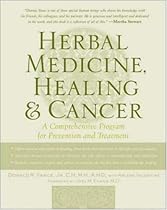 Phytochemicals in Food
Phytochemical
Food in Which Naturally Found
Action in Body
Limonene and nomilin
Citrus pectin
Sulfur-containing compounds, sulforphane
Allyl sulfides
S-allylmercaptocysteine (SAMC) Dithiolethiones
Ellagic acid
Caffeic acid
Citrus fruit
Plant fiber of citrus fruit
Cruciferous vegetables (broccoli, cauliflower, kale, brussels sprouts, and other members of the cabbage family), onions
Garlic, onions, leeks, chives
Aged garlic Broccoli
Grapes, strawberries, raspberries, pomegranates
Fruit
Stimulate detoxification enzymes that break down carcinogens. Phytochemicals in Food
Phytochemical
Food in Which Naturally Found
Action in Body
Limonene and nomilin
Citrus pectin
Sulfur-containing compounds, sulforphane
Allyl sulfides
S-allylmercaptocysteine (SAMC) Dithiolethiones
Ellagic acid
Caffeic acid
Citrus fruit
Plant fiber of citrus fruit
Cruciferous vegetables (broccoli, cauliflower, kale, brussels sprouts, and other members of the cabbage family), onions
Garlic, onions, leeks, chives
Aged garlic Broccoli
Grapes, strawberries, raspberries, pomegranates
Fruit
Stimulate detoxification enzymes that break down carcinogens. |
Textbook of Natural Medicine 2nd Edition Volume 1Michael T. Murray, ND
See book keywords and concepts | | This helps to explain why consumption of cabbage family vegetables protects against cancer.
Oranges and tangerines (as well as the seeds of caraway and dill) contain limonene, a phytochemical that has been found to prevent and even treat cancer in animal models.24 Limonene's protective effects are probably due to the fact that it is a strong inducer of both phase I and phase II detoxification enzymes that neutralize carcinogens.
Inhibitors of phase I detoxification
Many substances inhibit cytochrome P450. |
Paul Pitchford
See book keywords and concepts |  Garlic, carrots, the cabbage family, and some other vegetables contain sulphur, which expels worms and intestinal parasites.
Healing Properties of Vegetables
It is important to recall that the healing value of food is influenced by its flavors and thermal properties. Examples: Bitter food dries damp body conditions including edema, mucus, cysts, or yeasts. Garlic, carrots, the cabbage family, and some other vegetables contain sulphur, which expels worms and intestinal parasites.
Healing Properties of Vegetables
It is important to recall that the healing value of food is influenced by its flavors and thermal properties. Examples: Bitter food dries damp body conditions including edema, mucus, cysts, or yeasts. |
page 3 of 5 | Next ->
FAIR USE NOTICE: The research quoted here is provided under the protection of Fair Use provisions and published by the 501(c)3 non-profit Consumer Wellness Center for the purposes of public comment and education. Authors / publishers may submit books for consideration of inclusion here.
TERMS OF USE: Read full terms of use. Citations of text from NaturalPedia must include: 1) Full credit to the original author and book title. 2) Secondary credit to the Natural News Naturalpedia as a research resource and a link to www.NaturalNews.com/np/index.html
This unique compilation of research is copyright (c) 2008 by the non-profit Consumer Wellness Center.
ABOUT THE CREATOR OF NATURALPEDIA: Mike Adams, the creator of this NaturalNews Naturalpedia, is the editor of NaturalNews.com, the internet's top natural health news site, creator of the Honest Food Guide (www.HonestFoodGuide.org), a free downloadable consumer food guide based on natural health principles, author of Grocery Warning, The 7 Laws of Nutrition, Natural Health Solutions, and many other books available at www.TruthPublishing.com, creator of the earth-friendly EcoLEDs company (www.EcoLEDs.com) that manufactures energy-efficient LED lighting products, founder of Arial Software (www.ArialSoftware.com), a permission e-mail technology company, creator of the CounterThink Cartoon series (www.NaturalNews.com/index-cartoons.html) and author of over 1,500 articles, interviews, special reports and reference guides available at www.NaturalNews.com. Adams' personal philosophy and health statistics are available at www.HealthRanger.org.
|
 |
Refine your search
with Cabbage family...
...and Foods and Beverages:...and Cabbage
...and Kale
...and Vegetables
...and Broccoli
...and Greens
...and Sprouts
...and Vegetable
...and Cauliflower
...and Beans
...and Carrots
...and Adjectives:...and Raw
...and Green
...and Anti-cancer
...and Little
...and White
...and Yellow
...and Red
...and Fresh
...and Dietary
...and Whole
...and Key Health Concepts:...and Foods
...and Diet
...and Plants
...and Phytochemicals
...and Herbs
...and Herb
...and Health
...and Chemicals
...and Problems
...and Products
...and Nutrients:...and Vitamin
...and Calcium
...and Vitamin C
...and Antioxidants
...and Iodine
...and Antioxidant
...and Beta-carotene
...and Chlorophyll
...and Folic acid
...and Carotenoids
...and Concepts:...and Sources
...and Source
...and Risk
...and Flavor
...and Taste
...and Consumption
...and Production
...and Time
...and Damage
...and Activity
...and Anatomy:...and Thyroid
...and Body
...and Breast
...and Liver
...and Head
...and Blood
...and Cells
...and Hair
...and Stomach
...and Tissues
...and Health Conditions and Diseases:...and Cancer
...and Breast cancer
...and Cancers
...and Tumors
...and Diabetes
...and Kidney stones
...and Virus
...and Cancer cells
...and Osteoporosis
...and Colon cancer
...and Actions:...and Eat
...and Cooking
...and Eating
...and Avoid
...and Growth
...and Functioning
...and Making
...and Preventing
...and Growing
...and Prevents
...and Plants and Herbs:...and Leaves
...and Root
...and Garlic
...and Roots
...and Red clover
...and Pepper
...and Sage
...and Leaf
...and Flower
...and Echinacea
...and Physiology:...and Prevent
...and Helps
...and Levels
...and Increase
...and Deficiency
...and Effects
...and Effect
...and Increases
...and Reduced
...and Improve
...and Substances:...and Food
...and Acid
...and Radiation
...and Water
...and Acids
...and Light
...and Lead
...and Extract
...and Oxygen
...and Liquid
...and Who:...and Family
...and Women
...and Men
...and For women
...and Human
...and Japanese
...and Animals
...and Smokers
...and Male
...and Doctors
...and Macronutrients:...and Seeds
...and Fiber
...and Enzymes
...and Minerals
...and Protein
...and Calories
...and Oils
...and Fatty acids
...and Fats
...and Mineral
...and Objects:...and Oil
...and Plant
...and People
...and Vitamins
...and Garden
...and Seed
...and Laboratory
...and Produce
...and Diets
...and List
...and Inhibitors
...and Properties
...and Doses
...and Dose
...and Infusion
...and Dosage
...and Diagnosis
...and Results
...and Stimulant
...and Drops
...and Where:...and Chinese
...and Europe
...and Asia
...and Asian
...and America
...and North america
...and United states
...and Italy
...and California
...and England
...and Medical Adjectives:...and Digestive
...and Cervical
...and Antiviral
...and Cellular
...and Inflamed
...and Scientific
...and Infected
...and Acute
...and Living
...and Water-soluble
|
Related Concepts:
Cabbage
Kale
Vegetables
Cancer
Family
Broccoli
Leaves
Raw
Foods
Greens
Eat
Sprouts
Food
Brussels sprouts
Acid
Vegetable
Cauliflower
Sources
Diet
Green
Plants
Anti-cancer
Vitamin
Calcium
Source
Thyroid
Seeds
Root
Carotenes
Vitamin C
Prevent
Oil
Body
Cooking
Beans
Women
Breast
Little
Breast cancer
Carrots
Helps
White
Cancers
Fiber
Eating
Collards
Avoid
Antioxidants
Garlic
Phytochemicals
Risk
Plant
Inhibitors
Indoles
Oleracea
Flavor
Liver
People
Yellow
Red
Fresh
Protease inhibitors
Iodine
Vitamins
Enzymes
Grains
Levels
Antioxidant
Taste
Head
Increase
Mustard greens
Consumption
Leafy
Beta-carotene
Production
Blood
Potatoes
Time
Bok choy
Minerals
Dietary
Glucosinolates
Radiation
Stalks
Growth
Roots
Herbs
Deficiency
Salads
Whole
Turnip
Sulforaphane
Damage
Juice
Dried
Nuts
Effects
Olive oil
Chlorophyll
|












